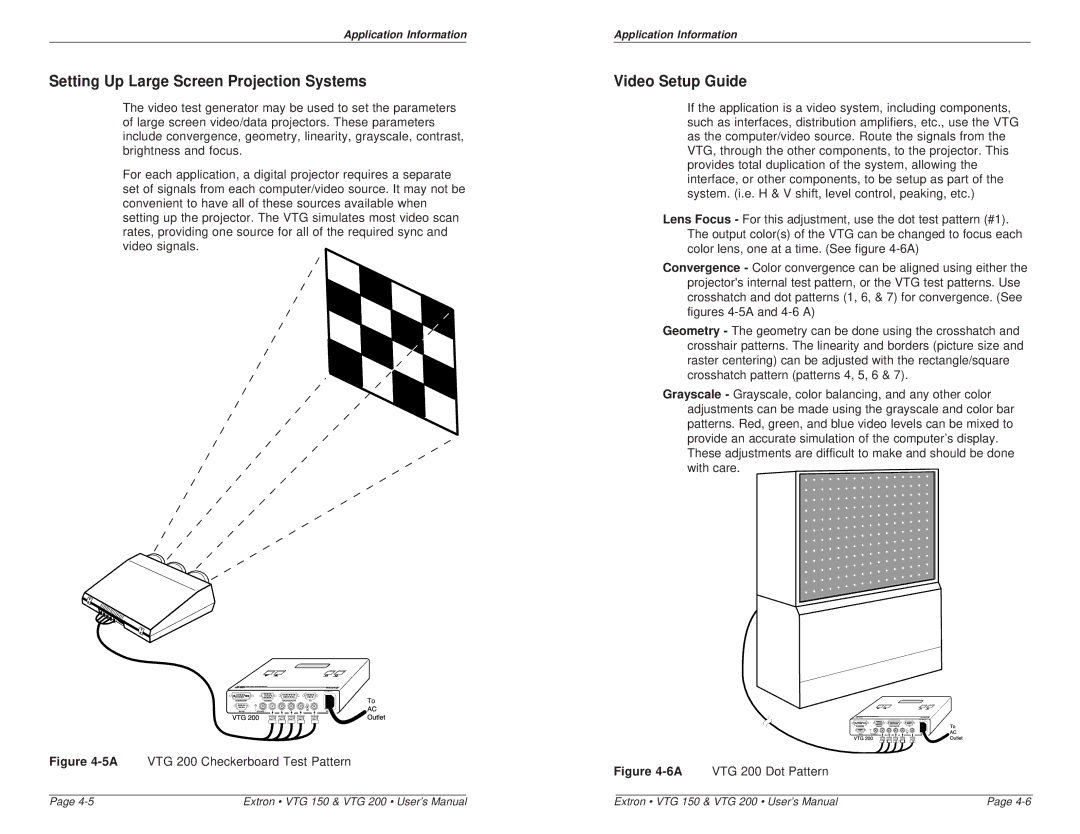
Application Information
Setting Up Large Screen Projection Systems
The video test generator may be used to set the parameters of large screen video/data projectors. These parameters include convergence, geometry, linearity, grayscale, contrast, brightness and focus.
For each application, a digital projector requires a separate set of signals from each computer/video source. It may not be convenient to have all of these sources available when setting up the projector. The VTG simulates most video scan rates, providing one source for all of the required sync and video signals.
Figure 4-5A VTG 200 Checkerboard Test Pattern
Application Information
Video Setup Guide
If the application is a video system, including components, such as interfaces, distribution amplifiers, etc., use the VTG as the computer/video source. Route the signals from the VTG, through the other components, to the projector. This provides total duplication of the system, allowing the interface, or other components, to be setup as part of the system. (i.e. H & V shift, level control, peaking, etc.)
Lens Focus - For this adjustment, use the dot test pattern (#1). The output color(s) of the VTG can be changed to focus each color lens, one at a time. (See figure
Convergence - Color convergence can be aligned using either the projector's internal test pattern, or the VTG test patterns. Use crosshatch and dot patterns (1, 6, & 7) for convergence. (See figures
Geometry - The geometry can be done using the crosshatch and crosshair patterns. The linearity and borders (picture size and raster centering) can be adjusted with the rectangle/square crosshatch pattern (patterns 4, 5, 6 & 7).
Grayscale - Grayscale, color balancing, and any other color adjustments can be made using the grayscale and color bar patterns. Red, green, and blue video levels can be mixed to provide an accurate simulation of the computer’s display. These adjustments are difficult to make and should be done with care.
Figure 4-6A VTG 200 Dot Pattern
Page | Extron • VTG 150 & VTG 200 • User’s Manual | Extron • VTG 150 & VTG 200 • User’s Manual | Page |
